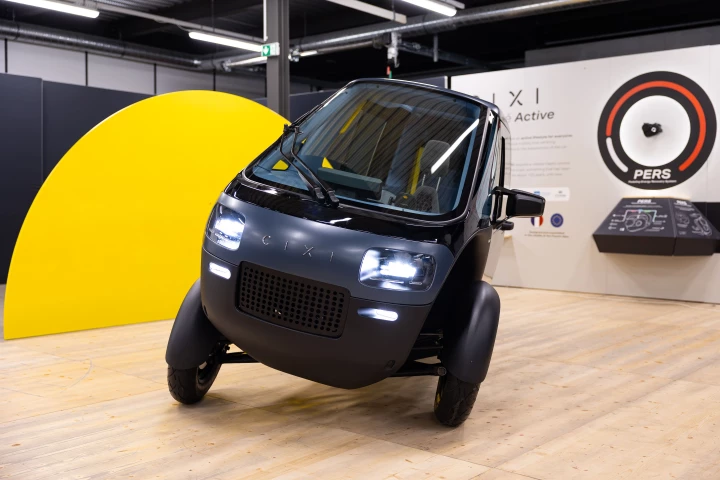The dirigible airship, the oddball aircraft of another era, is making a comeback. California-based Aeros Corporation has created a prototype of its new breed of variable buoyancy aircraft and expects the vehicle to be finished before the end of 2012. With its new cargo handling technology, minimum fuel consumption, vertical take-off and landing features and point to point delivery, the Aeroscraft platform promises to revolutionize airship technology.
The Aeroscraft ship uses a suite of new mechanical and aerospace technologies. It operates off a buoyancy management system which controls and adjusts the buoyancy of the vehicle, making it light or heavy for any stages of ground and flight operation. Automatic flight control systems give it equilibrium in all flight modes and allow it to adjust helium pressurized envelopes depending on the buoyancy requirements. It just needs one pilot and has an internal ballast control system, which allows it to offload cargo, without using ballast. Built with a rigid structure, the Aeroscraft can control lift at all stages with its Vertical Takeoff and Landing (VTOL) capabilities and carry maximum payload while in hover. What makes it different from other vehicles is that it does not need a runway or ground infrastructure.
Aeros has been running for 25 years as an airship producer as well as a research and development firm for the aerospace industry.
First, it has to be said that the Aeroscraft is not a blimp and it’s not a hybrid vehicle. And according to Aeros, it’s definitely nothing like the ill-fated LZ129 Hindenburg airship which crashed and burst into flames in New Jersey in 1937.
At the time, the disastrous crash was seen as the end of airships. But technology has marched on. The Aeroscraft is a completely different and radical design. The United States Patent and Trademark office issue assigned a design patent for the Aeroscraft in July 2012. Design elements include a smart automotive digital flight control system, enhanced envelope fabric and a robotic mooring system that make it superior in operations and maintenance. Of course, that means it has a minimum personnel requirement.

The vehicle is close to being completely built and ready for operation. The multilayer outer cover application is now in complete and the Aeros expects to finish construction over the next three weeks. The two front horizontal control surfaces, known in the industry as Canards, have been successfully tested and are ready to go.
So what can we expect to see next year?
The Aeroscraft prototype is 79 meters (260 ft) long, and while it is not designed to carry a payload, Aeros says the planned full-scale craft will be almost twice as long and will be capable of carrying a maximum payload of 66 tons with no infrastructure requirements. It is much simpler and easier than using a plane, which has the potential to significantly reduce air freight costs.
The vehicle, which promises to cut fuel consumption by one third of what’s traditionally generated by air freight, is designed to deliver payload directly to point of use, bypassing ports and highways, and taking goods to areas with minimum infrastructure. It has vertical take-off and landing capabilities, the ability to operate at low speed and it can hover from unprepared surfaces. Goods can be off-loaded with minimum ground handling.
Aeros says the vehicle would suit commercial operations and humanitarian missions involving search and rescue, emergency relief and airborne hospitals but the obvious area where we would most likely see it initially would be the military. It would be particularly useful for the Pentagon which is already deploying drones. A stationary or slow moving Aeroscraft could provide constant surveillance, potentially lingering over an area for days at a time.
Significantly, Aeros already has a commercial relationship with the US Army, picking up a contract in July for Technology Enabled Capability Demonstrations (TECD) in areas related to force protection. This involves the shrapnel and fragment resistant flexible panels based on Aeros Interfacial Debonding Energy Absorption (IDEA) fabric technology and portable lightweight structural hybrid truss towers based on Aeros’ composite hybrid truss design and fabrication process.
Aeros has already been talking to USTRANSCOM, the United States Transportation Command which is part of the Department of Defence.
Stay tuned for our in-depth interview with Aeros founder and CEO Igor Pasternak.
Source: Aeros
Editor's note: this article was amended on December 6, 2012 on receiving updated information from the company stating that the prototype Aersocraft is not designed to carry a payload.













